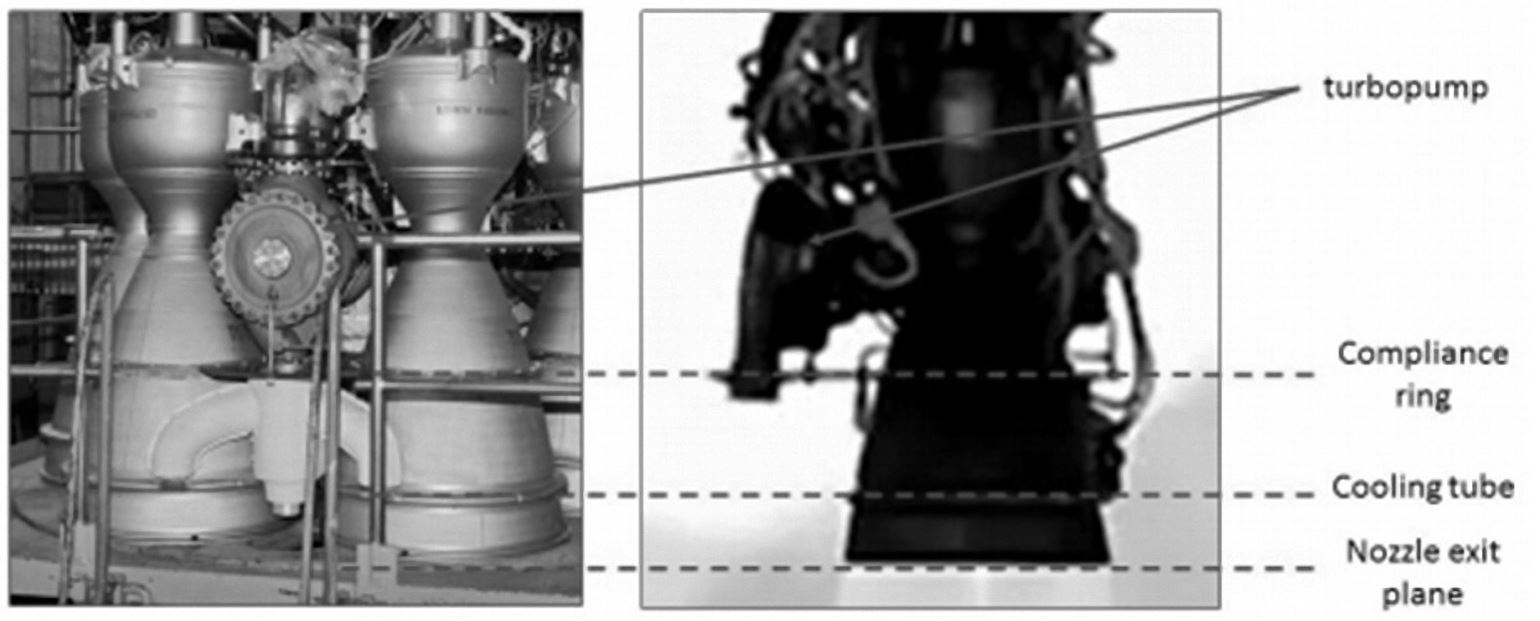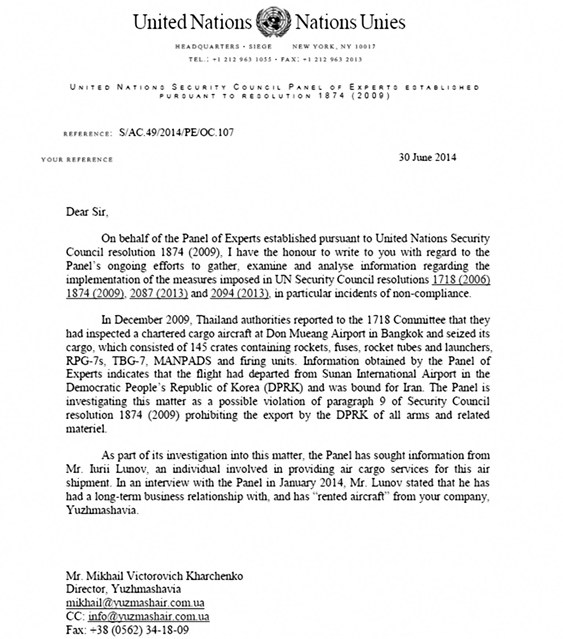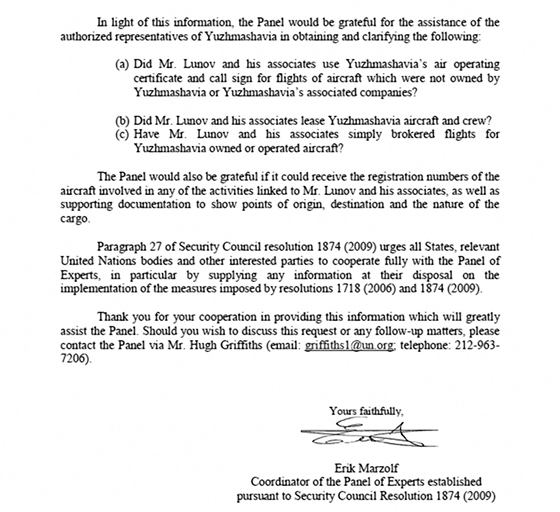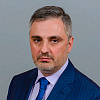In response to the DPRK nuclear test in October 2006, the UN Security Council adopted the first “sanction” resolution 1718 (2006). The Council decided that all Member States shall take measures to prevent the direct or indirect supply, sale or transfer to the DPRK of any missiles or missiles systems, as well as items, materials, equipment, goods and technology that could contribute to DPRK’s nuclear-related, ballistic missile-related or other weapons of mass destruction-related programs.
In April 2017, the Panel of Experts was confidentially informed that the engines used on the North Korean intermediate-range ballistic missiles [1] “Hwasong-12” could have been derived from the Soviet-era RD-250, a twin-combustion chamber engine (see Figure 1) [2]. The information motivated the Panel of Experts to launch an investigation with possibility of making subsequent recommendations to the UN Security Council on toughening the sanctions’ regime.
On 4 May and 9 May 2019, the DPRK successfully launched single-stage, solid-fuel short-range ballistic missiles (SRBM) from transporter-erector-launcher vehicles, each of them carrying two missiles (first demonstrated at the military parade in Pyongyang on February 8, 2018). According to expert estimates, the North Korean SRBMs are visually similar to the Ukrainian “Grom-2”, being developed by “Yuzhnoye”.
All of the above indicates yet another fact that the U.S. shields its wards, even if their actions can indirectly pose a threat to the American national security. Clearly, given the U.S. delegation's veto in the UN Security Council, there is no talk of imposing sanctions against the parties involved in illegal activities.
In response to the DPRK nuclear test in October 2006, the UN Security Council adopted the first “sanction” resolution 1718 (2006). The Council decided that all Member States shall take measures to prevent the direct or indirect supply, sale or transfer to the DPRK of any missiles or missiles systems, as well as items, materials, equipment, goods and technology that could contribute to DPRK’s nuclear-related, ballistic missile-related or other weapons of mass destruction-related programs.
In April 2017, the Panel of Experts was confidentially informed that the engines used on the North Korean intermediate-range ballistic missiles [3] “Hwasong-12” [4] could have been derived from the Soviet-era RD-250, a twin-combustion chamber engine (see Figure 1). The information motivated the Panel of Experts to launch an investigation with possibility of making subsequent recommendations to the UN Security Council on toughening the sanctions’ regime.
Additional impetus for the investigation became sensational publications of the report of the International Institute for Strategic Studies (hereinafter - IISS) and the article of “The New York Times” of 14 August 2017 titled “North Korea’s Missile Success Is Linked to Ukrainian Plant, Investigators Say”, as well as the following successful tests of two intercontinental ballistic missiles (hereinafter - ICBMs) “Hwasong-14” in July 2017 by the DPRK. The well-known American missile expert at the IISS, Michael Elleman, stated, “It’s likely that these engines [for the “Hwasong-14” ICBMs] came from Ukraine – probably illicitly.” “The main question is how many [engines] they [the DPRK] have and whether the Ukrainians are helping them now,” he noted.
Figure 1: Comparison of the RD-250 engine (left) and the North Korean engine (right)

Source: Report of the Panel of Experts to the UN Security Council, S/2018/171, Figure IV, 5 March 2018
Moreover, Mr. Elleman in “The New York Times” referred to the Panel of Experts report (dated 2013) on the prevention of an attempt by two DPRK nationals to obtain access at the Yuzhnoye Design Office (hereinafter - “Yuzhnoye”) to classified missile design materials in 2012 by the Ukrainian Security Service. According to Ukrainian authorities, North Koreans were interested in information on advanced technologies and new forms of technological processes for the design of missile systems, liquid-propellant engines, spacecraft and missile fuel supply systems, as well as associated computer programs.
According to the information provided by the Ukrainian and Belarusian authorities to the Panel of Experts, Ryu Song-Chol and Ri Thae-Gil held North Korean service passports and were accredited to the DPRK's trade representative office in Minsk. Both were sentenced in May 2012 to terms of imprisonment in Ukraine of eight years.
“Yuzhnoe” and Yuzhmash Production Association (hereinafter – “Yuzhmash”) [5] promptly responded to the publications (IISS and “The New York Times”). In their joint statement, it was declared that “images and characteristics of North Korean engines, that the authors [IISS and “The New York Times”] cite in their conclusions, are not at all the RD-250 engines” (see Figure 2, paragraph 1).
Figure 2: Excerpt from joint statement of “Yuzhmash” and “Yuzhnoye”, 15 August 2017

Source: Press-center “Yuzhmash”. 15 August 2017.
Concurrently, the Permanent mission of the United States of America to the United Nations in New York sent a “targeted” letter to some members of the Panel of Experts (not surprisingly, among them were representatives of the USA, the UK, France, the Republic of Korea and Japan). The Mission urged to conduct “a fair and a balanced” review of the issue and “to critically review of all allegations made by governmental and non-governmental actors, especially the two misinformed and faulty analysis” issued by IISS and “The New York Times, or any other official government submission of information that could be designed to achieve ulterior objectives by trying to substantiate these false claims” (see Figure 3).
Figure 3: Letter to the Panel of Experts members from the United States Permanent Mission to the United Nations in New York, 22 August 2017

Source: Author’s archive
At the same time, the Americans did not scruple to present a “very helpful” assessment by the U.S. government consultant Josh Pollack to the experts, according to which the origin of the North Korean ICBM engines would have “Iranian” roots.
Despite pressure from the U.S. delegation, the Panel of Experts decided to conduct an independent investigation and sent a request to the Ukrainian side. In its turn, Ukraine confirmed “that it was highly likely” that the DPRK engine contained separate components of the RD-250 engine, which obviously contradicted the above joint statement by “Yuzhnoye” and “Yuzhmash”.
In this regard, it should be noted that in 2013-2014, the Panel of Experts reported on an investigation of the largest arms shipment (in the history of UN sanctions regimes) seized in 2009 by the Thailand intelligence authorities on board an Il-76 transport plane, charter flight en route from Pyongyang via Kiev. The inspection revealed that the cargo consisted of some 35 tons of conventional arms and munitions, including 240-mm rockets, rocket-propelled grenades and man-portable air defense systems, valued at over US$ 16 million. It was reported that the plane’s owner was a Georgian airline company, Air West Georgia, and was leased to a front company, SP Trading, with an office in the Ukrainian capital.
Among the key defendants in the case of illegal weapons deliveries from the DPRK were “co-owners” of SP Trading – Ukrainian nationals I. Lunov (born in Dnepropetrovsk) and I. Karev-Popov. In 2013, experts recommended to designate these two individuals as subject to the travel ban and assets freeze.
In an interview with the Panel of Experts in the presence of the Ukrainian Security Service representatives in Kiev in January 2014, Mr. I. Lunov stated that he had a long-term business relationship with and has “rented aircraft” from the Ukrainian aviation transport company “Yuzhmashavia”.
Based on this information, in June 2014 the coordinator of the Panel of Experts contacted the director of “Yuzhmashavia” M. Kharchenko (see Figure 4) with a request to provide relevant explanations, but there was no reply.
Given that “Yuzhmashavia” is a flying division of “Yuzhmash” and operates two Ilyushin IL-76TD cargo aircrafts with a carrying capacity of up to 50 tons, there is a strong possibility that the elements of the Ukrainian missile engines, as well as specialists, could be directly delivered to the DPRK.
Moreover, on May 4 and 9, 2019, the DPRK successfully launched single-stage, solid-fuel short-range ballistic missiles (SRBM) from transporter-erector-launcher vehicles, each of them carrying two missiles (first demonstrated at the military parade in Pyongyang on 8 February 2018). The missiles’ flown distance was 420 km and 270 km respectively. According to expert estimates, the North Korean SRBMs are visually similar to the Ukrainian “Grom-2”, being developed by “Yuzhnoye”.
All of the above indicates the yet another fact that the U.S. shields its wards, even if their actions can indirectly pose a threat to the American national security. Clearly, given the U.S. delegation's veto in the UN Security Council, there is no talk of imposing sanctions against the parties involved in illegal activities.
Figure 4: Letter from the coordinator of the Panel of Experts E.Marzolf to the “Yuzhmashavia” director M. Kharchenko, 30 June 2014


Source: Author’s archive
1. The Panel of Experts utilizes the following classification: short-range ballistic missiles = range below 1,000 kilometers; medium-range ballistic missiles = 1,000–3,000 kilometers; intermediate-range ballistic missiles = 3,000–5,500 kilometers; and intercontinental ballistic missiles = 5,500 kilometers or more.
2. Report of the Panel of Experts to the UN Security Council, S/2018/171, paragraph 14, 5 March 2018. URL: https://www.securitycouncilreport.org/atf/cf/%7B65BFCF9B-6D27-4E9C-8CD3-CF6E4FF96FF9%7D/s_2018_171.pdf
3. The Panel of Experts utilizes the following classification: short-range ballistic missiles = range below 1,000 kilometers; medium-range ballistic missiles = 1,000–3,000 kilometers; intermediate-range ballistic missiles = 3,000–5,500 kilometers; and intercontinental ballistic missiles = 5,500 kilometers or more.
4. According to one Member State, the “Hwasong-12” can have a flight range of 4,500 km (with warhead mass of 750 kg), which is classified as intermediate-range ballistic missile (IRBM).
5. Located in the Ukrainian city of Dnipro, the former Dnepropetrovsk.










